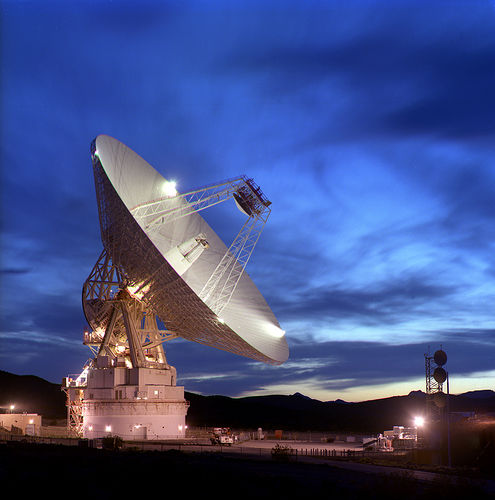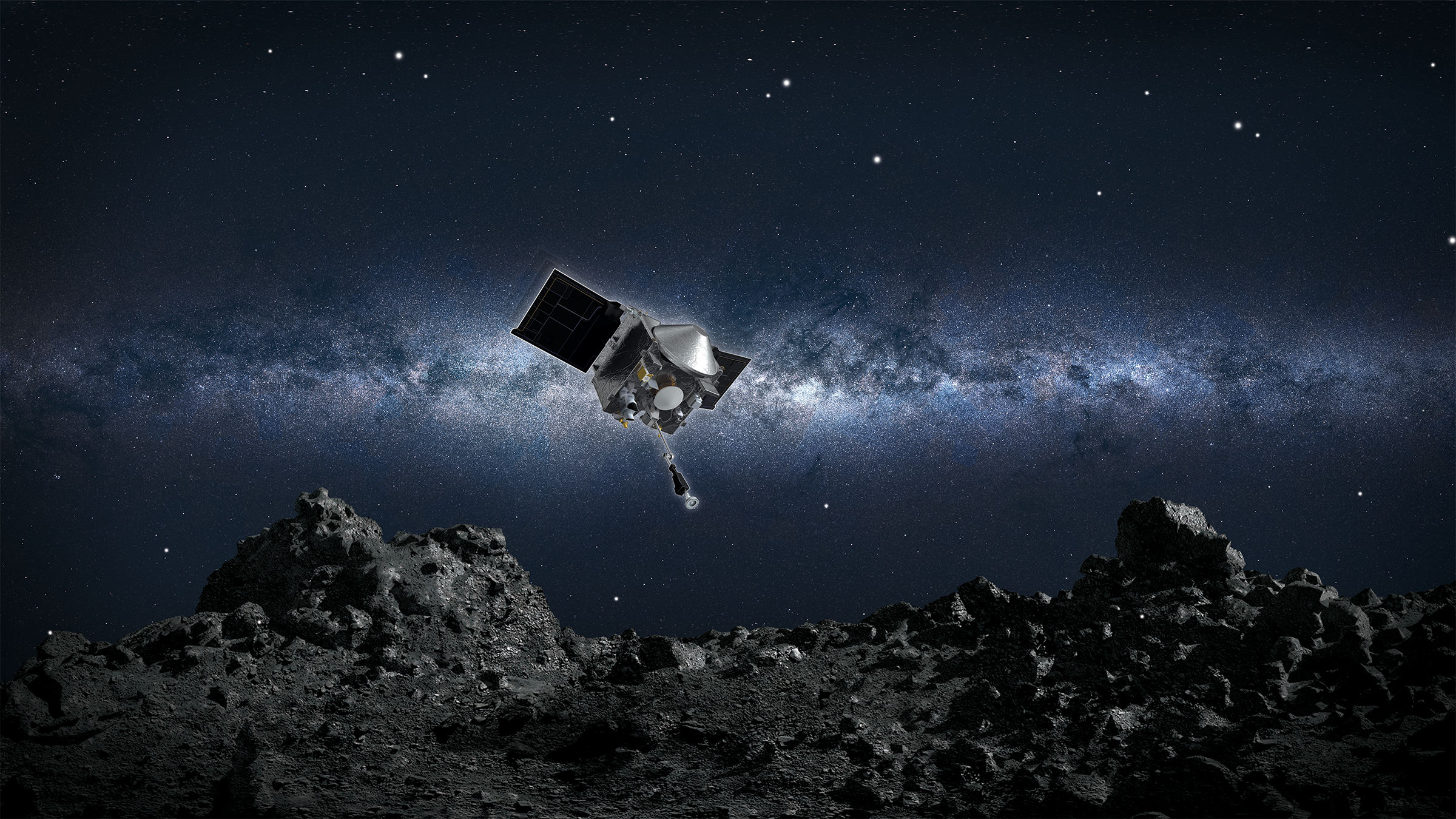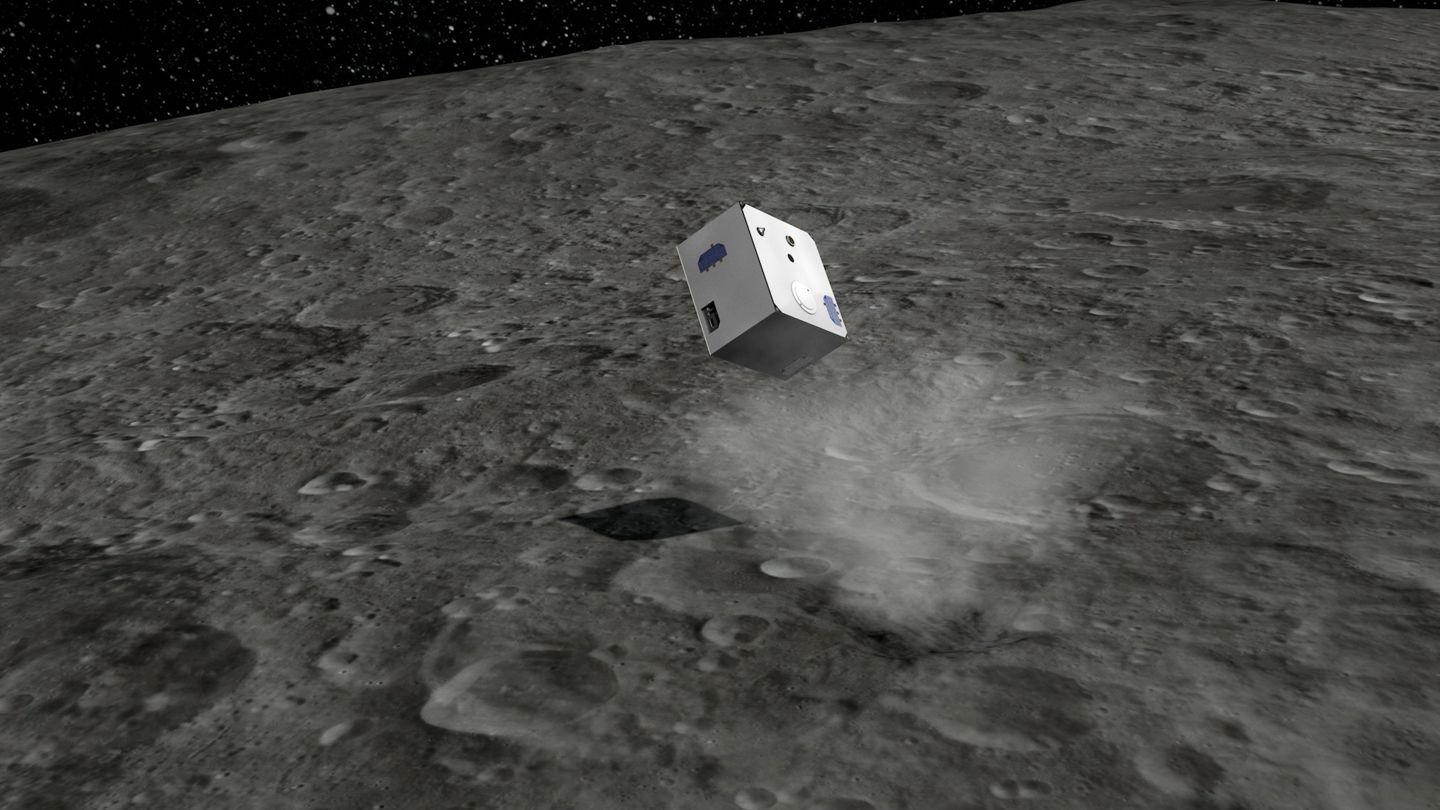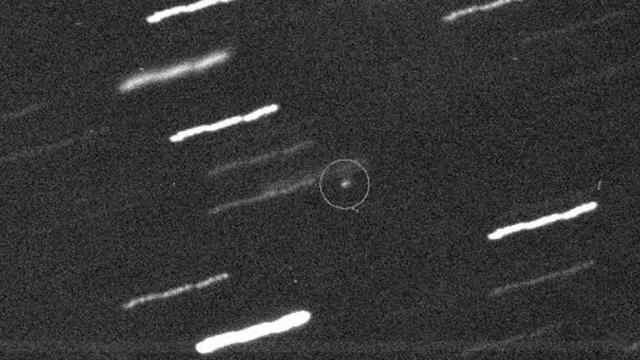The clock is officially ticking.
Apophis — an asteroid as wide as three football fields — has a slim chance of slamming into Earth in 2068. Before then, however, the object is scheduled to zip past us in an encounter that scientists are already planning to exploit. Here are some intriguing ways in which we could explore Apophis during its next close approach in 2029.
In just nine years, potentially hazardous asteroid 99942 Apophis will come to within 30,578 km of our planet. At one-tenth the distance between Earth and the Moon, that’s a close shave by any measure, and an exceptionally rare occurrence for an asteroid of this size — it’ll actually be visible to the naked eye. Current estimates place the mean width of the object at roughly 350 metres. The 2029 close approach is considered a once-in-a-thousand-year opportunity for scientists to study an object of this size as it brushes past a planet.
Indeed, the gravitational stresses imposed on the asteroid during this flyby will be of great interest to scientists, but there’s a potentially more pressing issue at stake. Apophis is ranked third on NASA’s naughty list for potentially hazardous near-Earth objects (NEOs), with a 1 in 150,000 chance of hitting Earth in 2068. Other estimates place the odds closer to 1 in 530,000, but regardless, Apophis represents a potential catastrophic threat.

Should Apophis crash into Earth, it would unleash the equivalent of 1,150 megatons of TNT, in an event 3,800 times more powerful than the atomic bomb detonated over Hiroshima. The 2029 close approach, therefore, presents a crucially important opportunity to study this asteroid in more detail so scientists can further evaluate its risk potential. What’s more, the exercise could serve as a trial run should we one day detect an object even scarier than Apophis.
With all this in mind, the Lunar and Planetary Institute recently held a virtual workshop called “Apophis T-9 Years: Knowledge Opportunities for the Science of Planetary Defence.” The workshop, which ran from November 4 to 6, included nearly 200 attendees and featured experts in asteroids, astrophysics, radar astronomy, robotics, and engineering. The point of the conference was to bring like-minded people together to ponder the various ways in which we could investigate Apophis in 2029.
Speaking at the conference, Andrew Cheng, chief scientist at Johns Hopkins University Applied Physics Laboratory, called it a “natural experiment” and a rare opportunity to study the asteroid’s exterior and interior. Indeed, there’s plenty we still don’t know about this asteroid and how its close encounter with Earth will alter its composition, orbit, and other attributes. Apophis was discovered 16 years ago, but we’re still limited to vague measurements and grainy radar images.
The list of unknowns and uncertainties is long, including the object’s precise orbit, Yarkovsky drift (an effect in which the uneven leaking of heat across an object’s surface alters its orbital path), heat distribution (which relates directly to Yarkovsky), rotation, shape, strength, internal structure, chemical composition, surface topology, and roughness.
Astronomers believe Apophis is irregularly shaped (possibly like a cigar) and that it’s a contact binary, in which two objects came together to form a single object (as such, it could feature lobes and a neck, not unlike comet Comet Churyumov–Gerasimenko). Truth is, we don’t actually know.
Both ground-based and space-based missions in 2029 would help to clarify many of these questions. What’s more, the missions could chronicle the various ways in which the close flyby with Earth will affect its various features, such as its spin and the potential displacement of surface materials. The flyby could also trigger tiny avalanches and asteroid-quakes. And importantly, we’ll know how the close approach might affect its orbit and Yarkovsky drift rate — both major factors in estimating its risk potential for 2068. What’s more, Apophis “presents an excellent opportunity to prototype and demonstrate a rapid response NEO reconnaissance capability,” as Brent Barbee, an aerospace engineer from the University of Maryland, explained at the conference.
The simplest way to observe Apophis will be from the ground. Radar scientist Marina Brozović from NASA’s Jet Propulsion Laboratory said we can do this as early as next year, when Apophis will come to within 16.9 million km of Earth. This will be our “last chance for radar imaging before 2029,” she said. Yaeji Kim, a Ph.D. student at the Department of Aerospace Engineering at Auburn University, said observations of the asteroid in March 2021 will improve our shape and spin estimates, provide better 3D modelling, and indicate possible landslides and structural failures. Importantly, some of these parameters can tell us about what’s happening inside the object.

In 2029, however, when Apophis comes to within 30,578 km of Earth (fun fact: this is closer than some satellites currently in orbit), that’s when ground facilities will really shine. Brozović listed a bunch of observatories that could chip in and help, including California’s Goldstone Solar System Radar, Canberra Deep Space Communication Complex, MIT Haystack Observatory, Germany’s Tracking and Imaging Radar, and Arecibo in Puerto Rico (pending repairs). She predicts the surface of Apophis will be resolved with more than 10,000 pixels taken at 1.875 meters per pixel resolution. This should get us “full rotational coverage,” she said, adding that radar polarimetry will reveal surface roughness, the distribution of regolith (surface material), and tidal resurfacing, while radar tomography could reveal the depth of the regolith and subsurface structure.
This is all very promising, but Barbee said onsite or close-up observations of the asteroid are probably the “only way of reducing uncertainties” in terms of the object’s threat risk. Once we’re equipped with this knowledge and we have a better sense of the threat to Earth, we can then act accordingly and hatch a response plan (such as nudging it away from its orbital path, but that’s a story for another day).
Like Barbee, many of the attendees at the conference agreed that Apophis should be studied up-close with spacecraft. There was no shortage of ideas, with proposals for probes to study the asteroid at a distance (either during brief flybys or long-duration rendezvous missions), deploying probes and sensors to the surface, and various combinations therein.
For the 2029 encounter, Barbee proposed his team’s Reconnaissance of Apophis (RA) mission, which would involve a small spacecraft weighing less than 180 kg. Referring to it as a “rapid response demonstration,” he said RA would test our ability to quickly develop a solution for exploring a potentially dangerous object and to develop missions with an acceptable elevated risk of failure. Using solar electric low-thrust propulsion, RA would rendezvous with Apophis about six to eight months prior to the April 12, 2029 swing past Earth. The probe would then stay in close proximity to the asteroid, collecting data before, during, and after the flyby.
Alain Herique from the University of Grenoble Alpes said a probe equipped with radar could study Apophis’s deep interior and regolith, which would reveal its stability and evolutionary history.
At a close distance, a spacecraft could perform some geology to help determine the types of rocks that exist on Apophis and the effects of space weathering, said NASA JPL scientist Carol Raymond. We could document boulders, fractures, grooves, and impact craters, and also uncover clues, such as surface hydrogen, linking it to other NEOs, she said. Ideally, she envisions a probe equipped with various cameras, spectrometers (including infrared and thermal), radar, and radio capabilities. Raymond explained that a flyby mission to Apophis “is better than nothing,” but for Apophis, a “rendezvous mission is strongly preferred.”
Terik Daly, a planetary scientist at Johns Hopkins University, is looking forward to the potential synergy produced by both ground-based and spacecraft-based measurements. He’s particularly concerned about how the close approach might alter key variables applicable to Earth defence, such as Apophis’s orbit, rotational state, strength, porosity, and surface topology. Daly says we need a plan to study Apophis “during, before, and after” its closest approach, after which time we can re-evaluate its potential threat.
Engineer Jan Thimo Grundmann from German space agency DLR proposed an idea in which a spacecraft propelled by a solar sail would slip into a “parking spot” near the asteroid and hang out for an extended period. Such a probe could deploy a mobile lander to the surface and continually adjust its sails to keep up — and never have to worry about running out of propellant.

Dante Lauretta, a professor of planetary science in the Lunar and Planetary Laboratory at the University of Arizona, said the OSIRIS-REx spacecraft — currently in orbit around asteroid Bennu — could reach Apophis by 2029. Once at the asteroid, it could perform many of the tasks done at Bennu, such as mapping the object’s topology, chemistry, and mineralogy with a suite of onboard instruments. This seems like a fantastic idea, as NASA’s OSIRIS-Rex mission has been nothing but a stunning success thus far.
Speaking of not having to reinvent the wheel, Grundmann proposed the use of MASCOT to explore Apophis’s surface. These shoebox-sized robots, which were used to study asteroid Ryugu in 2018 and 2019, are mobile, capable of hopping from spot to spot on an asteroid. They’re also highly customisable, making them a viable option for Apophis. Grundmann suggested a MASCOT be sent to Apophis equipped with a seismometer.

Cheng would like to see an active impactor experiment done on the surface, which could produce a seismic map of the asteroid’s interior. This would involve a probe capable of drilling through the surface material, but he admitted the timelines are tight in terms of developing the requisite technologies for such a mission. Aerospace engineer Masatoshi Hirabayashi from Auburn University also wants to drill into Apophis, but he’d like to see a probe capable of measuring the pressure just below the surface, which would provide important data about the dynamic stresses exerted onto the asteroid during the close encounter.
A really cool idea proposed by David Smith, an emeritus researcher at NASA Goddard in Greenbelt, Maryland, is to drop a bunch of small reflectors onto Apophis, which would allow scientists to track the asteroid’s motion for an entire decade, if not longer. Should the reflectors change their position on the surface over time, scientists could take that as potential evidence of changes to the object’s physical integrity. Smith’s plan calls for around 10 to 20 laser micro-reflector arrays, each weighing around 20 grams, dropped onto the surface in 2028; they’d be released from a height of around 1 km and perform a slow free-fall onto Apophis’s surface. A satellite network in Earth orbit would monitor the reflectors via X-band and laser altimeters.

More conceptually, Jay McMahon from the University of Colorado Boulder proposed the use of soft robotics to explore the asteroid’s surface. These machines are ideal for exploring small NEOs, as they’re easy to deploy, highly configurable, and can be used anywhere on the asteroid, he said. McMahon proposed a version in which the soft robots would be equipped with radar antennas, seismometers, devices to measure surface motion or strain, and tools to do gravity science.
Like I said, no shortage of ideas. The key now is to turn these concepts into actionable items and to coordinate potential missions to avoid redundancy and maximise collaborative potential (multiple spacecraft around Apophis could create opportunities for some unique science, with the probes working in concert with each other). The next few years could be quite exciting, as we see some of these projects take shape.
It may have occurred to some of you that these missions, whether flybys, rendezvous, robotic probes, or drills, might actually alter Apophis’s orbital dynamics and make the asteroid even more threatening to Earth. This was actually discussed at the conference, and it’s an issue important enough for me to devote an entire article on the subject. Stay tuned for more!
